Exhibition – Famous Artists in North Queensferry
Artists with links to North Queensferry
In 2019, North Queensferry Heritage Trust presented an exhibition dedicated to the world famous artistic talents of:
J.M.W. Turner who sketched scenes around North Queensferry,
Charles Martin Hardie lived and worked in North Queensferry,
his nephew, Martin Hardie, visited Charles and created images around North Queensferry,
Sir John Lavery a war artist, captured scenes around North Queensferry,
and Terence Cuneo the railway artist, painted the Flying Scotsman on the Forth Bridge
– supported by local artists of today.
We are grateful to the Royal Collection Trust, National Galleries of Scotland, Abbotsford Trust, Cuneo Estate, Imperial War Museum, Science and Society Picture Library, Fine Arts Museum of San Francisco, Trustees of the Tate, Rijksmuseum Amsterdam, Irvine Burns Club, The Royal Caledonian Curling Club and a local sponsor who wishes to remain anonymous.
The exhibition was hosted in the Forth Bridge Heritage Centre at North Queensferry Station and ran until October 2019
This webpage is a summary of the material presented.
JMW Turner – 1775 to 1851
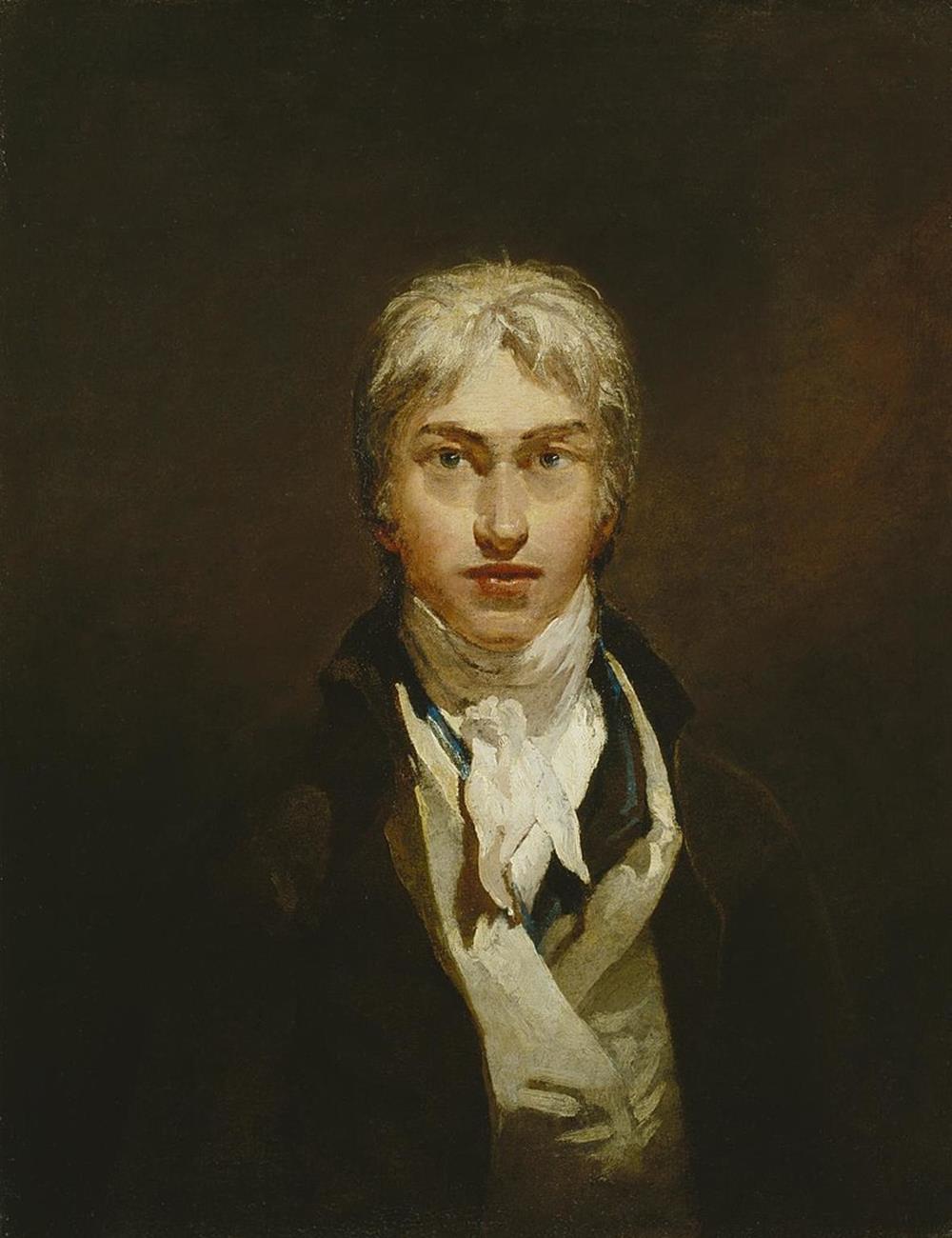
Joseph Mallord William Turner RA (23 April 1775 – 19 December 1851), known as J. M. W. Turner was an English Romantic painter, printmaker and water-colourist. He is known for his expressive colourisations, imaginative landscapes and turbulent, often violent marine paintings.
Turner was born in Maiden Lane, Covent Garden, London, to a modest lower middle-class family. He lived in London all his life, retaining his Cockney accent and assiduously avoiding the trappings of success and fame.
A child prodigy, Turner studied at the Royal Academy of Arts from 1789, enrolling when he was 14, and exhibited his first work there at 15. During this period, he also served as an architectural draftsman. He earned a steady income from commissions and sales, which due to his troubled, contrary nature, were often begrudgingly accepted. He opened his own gallery in 1804 and became professor of perspective at the academy in 1807, where he lectured until 1828, although he was viewed as profoundly inarticulate. He travelled to Europe from 1802, typically returning with voluminous sketchbooks.
Intensely private, eccentric and reclusive, Turner was a controversial figure throughout his career. He did not marry, but fathered two daughters, Eveline (1801–1874) and Georgiana (1811–1843), by his housekeeper Sarah Danby. He became more pessimistic and morose as he got older, especially after the death of his father, after which his outlook deteriorated, his gallery fell into disrepair and neglect, and his art intensified. He lived in squalor and poor health from 1845, and died in London in 1851 aged 76. Turner is buried in Saint Paul’s Cathedral, London.
He left behind more than 550 oil paintings, 2,000 water-colours, and 30,000 works on paper. He had been championed by the leading English art critic John Ruskin from 1840, and is today regarded as having elevated landscape painting to an eminence rivalling history painting.
Turner toured Scotland in 1818 recording topographical, architectural and other information in three sketch books, for possible use in commissioned works.
These three double pages of paper size approx. 90 x 112 mm (© Tate, London 2019) show:
Inchgarvie and North Queensferry
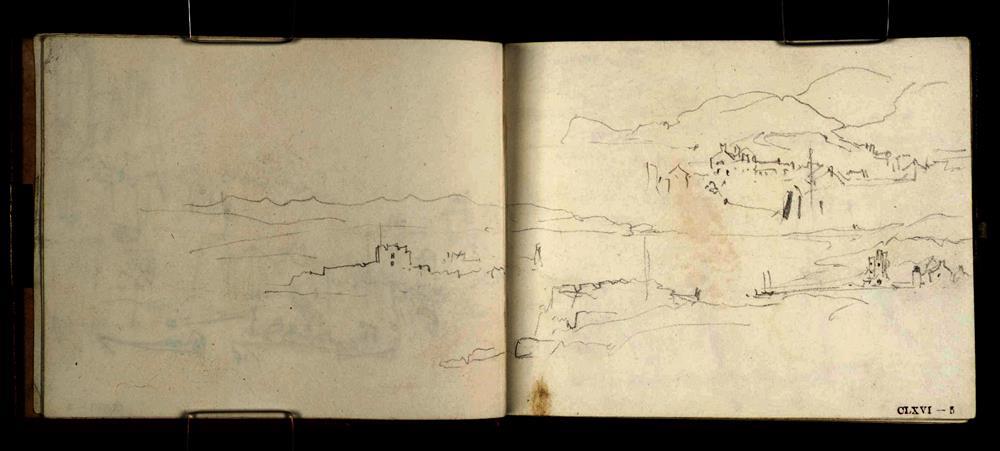
Shoreline of the Firth of Forth
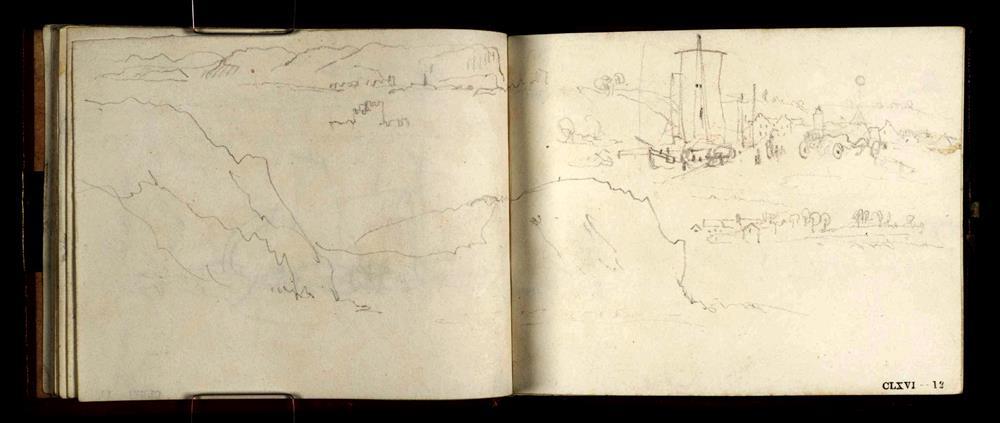
Unloading a boat at North Queensferry

The Bell Rock Lighthouse
In 1819, Stevenson commissioned Turner to design a frontispiece for his ‘Account of the Bell Rock Lighthouse’. This watercolour was the result.
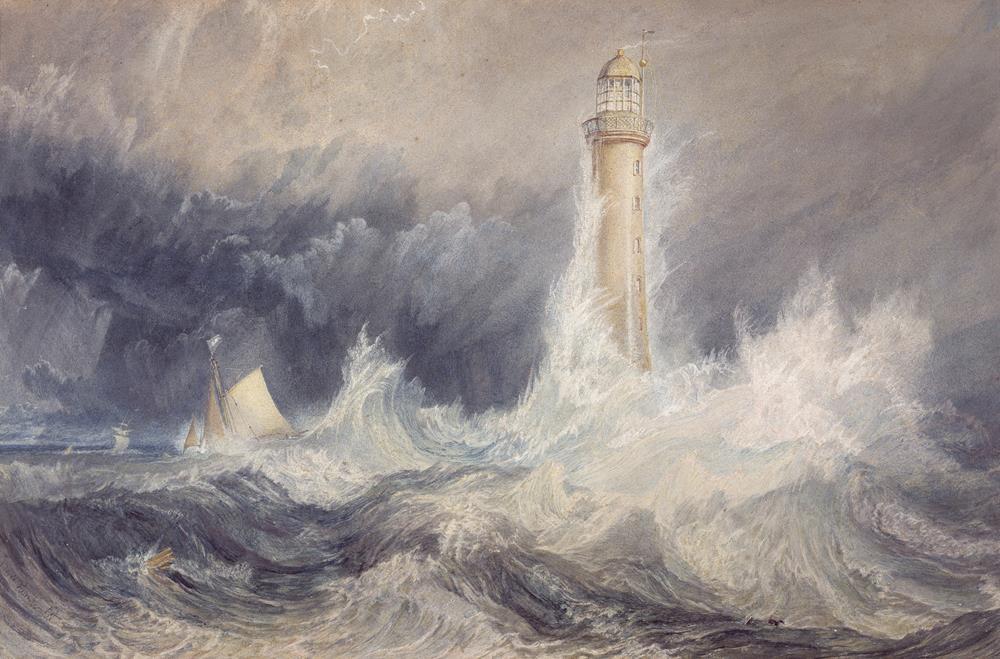
Turner never actually visited the lighthouse, and he probably based his design on drawings.
The original is 30.60 x 45.50 cm – courtesy of National Galleries of Scotland
Charles Martin Hardie 1858 – 1916
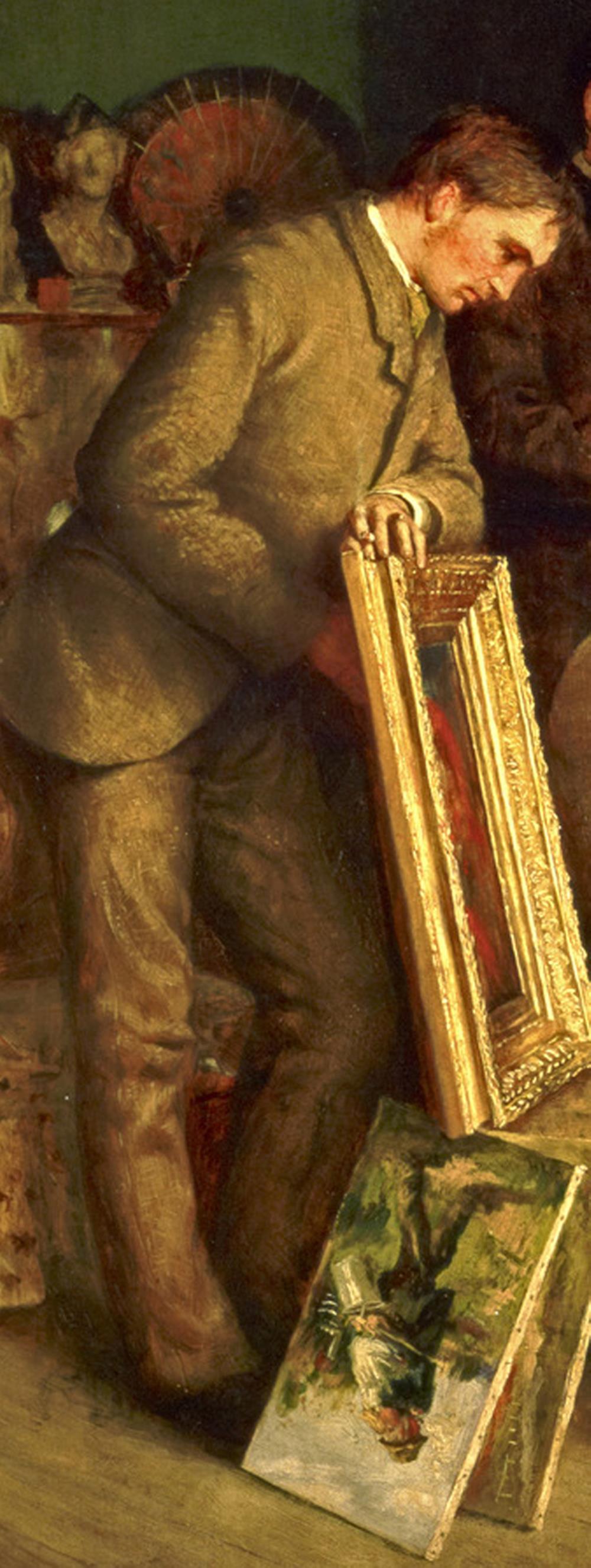
Charles Martin Hardie was born in East Linton, Haddingtonshire in 1858. He was educated at one of the village schools then worked for a while at his father’s carpentry business, before, perhaps influenced by the family connection with John Pettie RA, studying at the Royal Scottish Academy in 1876.
In 1879 he was awarded the Stuart prize for a design entitled “The Baron’s Jester,” and in 1880 he won the Keith Prize for the best student picture in that year’s Exhibition. He featured in the Academy’s Exhibitions during the next fifteen years with landscapes and pastorals, interiors and genre subjects, and many of village and agricultural life, with figures in rustic setting.
His work The Friendly Critics which was exhibited in the RSA in 1883 caused a stir at the time as it depicted a rare look into the bohemian life at Hardies Picardy Place studio in Edinburgh. The work featured Hardie himself together with other including fellow artists Robert Noble and George Whitton Johnstone.
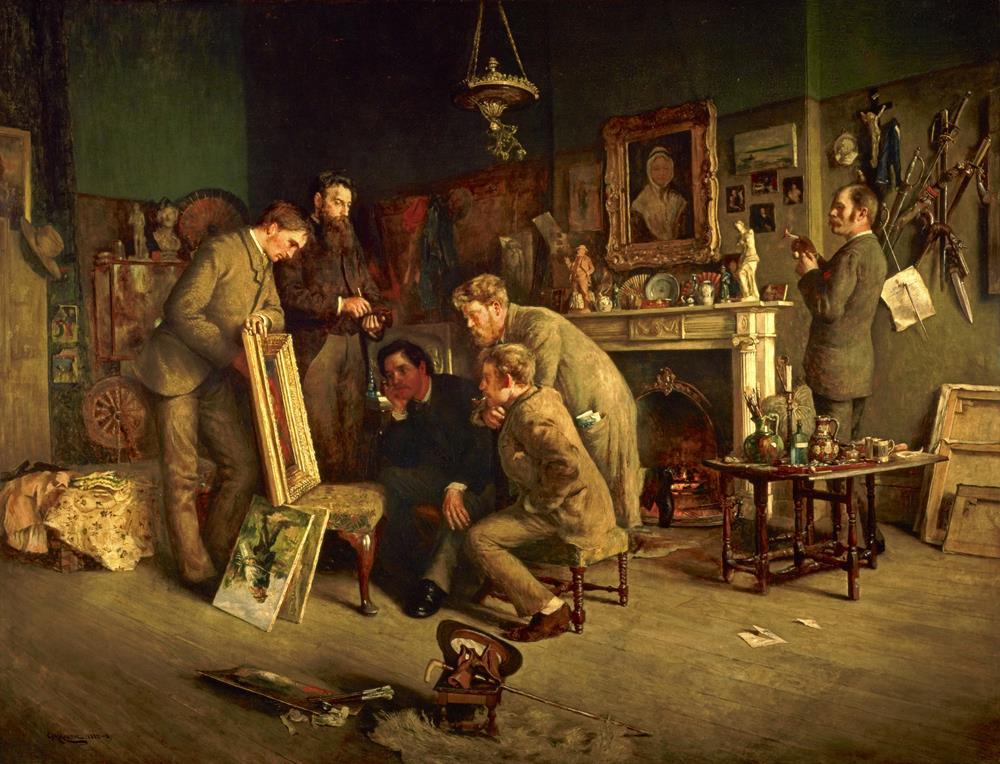
During the 1880’s and early 90’s came a series of works dealing with incidents notable in the history of Scotland. Such as:
Robert Burns reading his Poems to the Duchess of Gordon
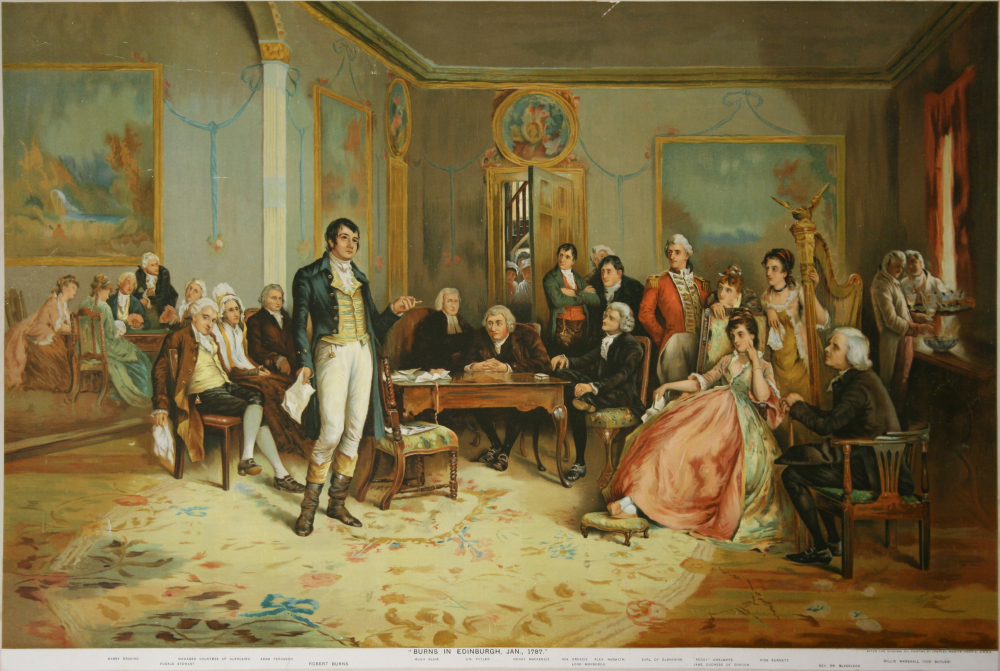
The painting shows Robert Burns reading ‘A Winter Night’ at the Duchess of Gordon’s house in Edinburgh, in 1787.
The Duchess of Gordon was described as ‘the empress of fashion’, and this image is a snapshot of Burns’ ‘big break’ in polite Edinburgh society.
In the audience you can spot leading philosophers such as Dugald Stewart (lounging with a hankie) and Adam Ferguson (direct left of Burns). Burns’ aristocratic patron the Duchess of Gordon is sitting in the foreground. One of Burns’ literary heroes, Henry Mackenzie is standing with his back to the door. You can find William Creech, Burns’ publisher, peeking out next to Henry Mackenzie. The butler with his back to the group, on the far right of the image, is Willie Marshall, a well-known composer of strathspeys and reels.
The Meeting of Scott and Burns
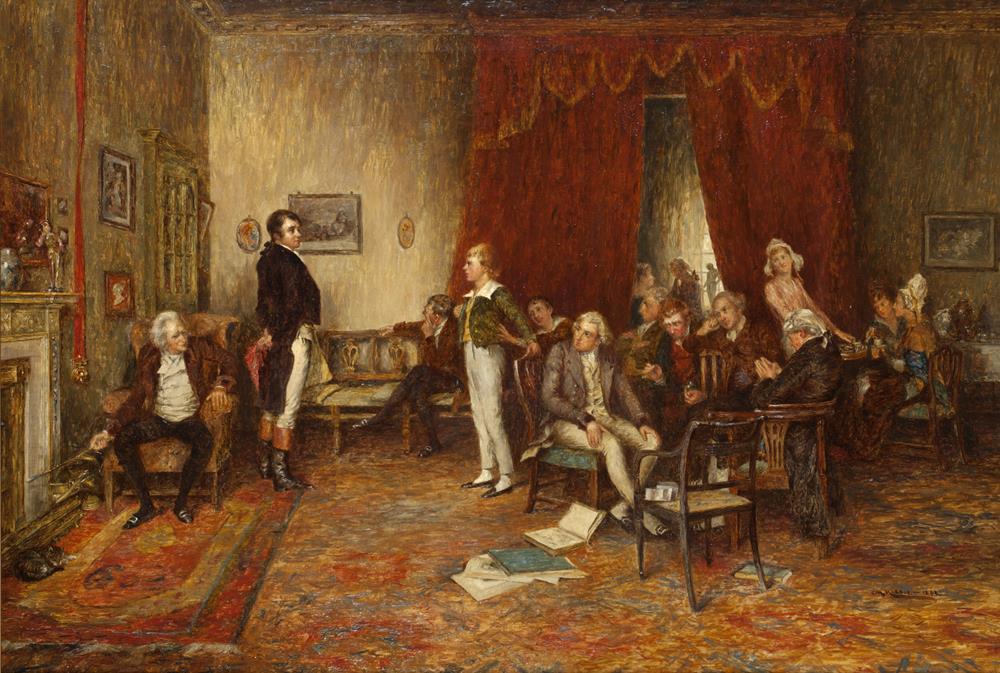
This painting shows Burns meeting Walter Scott in the winter of 1786-7. The meeting took place at Sciennes House in Edinburgh, home of Professor Adam Ferguson. Scott was only 15 at the time of the meeting but was already studying Classics at the University of Edinburgh.
Fergusson hosted a number of literary salons which were attended by various members of Edinburgh literary society. The artist went to considerable lengths to create good likenesses of the main people in attendance. To the left is Adam Ferguson stoking the fire, then Burns standing opposite Scott, Dugald Stuart seated, Joseph Black MD, Adam Smith, John Home (author of ‘Douglas’) and Dr James Hutton, Geologist.
An Unrecorded Coronation – Inchmahome, 1548

These paintings grew the artist’s reputation at home and abroad.
He painted many portraits, and at the close of the century received a commission to paint a curling match for the Diamond Jubilee of the Royal Caledonian Curling Club.
Curling at Carsebreck was displayed at the 1900 exhibition of the RSA.

It featured portraits of the leading exponents of the game throughout Scotland.
North Queensferry has a long association with the Game of Curling
He was elected Associate of the Royal Scottish Academy (RSA) in 1886 and nine years later attained Academician rank. During his thirty years’ association with the Academy he took his full share in the various duties and responsibilities of membership.
In the late 1890’s he moved with his wife and daughter to a large house, Garthhill in North Queensferry, which he had specially built, at the edge of the golf course, overlooking the Forth to continue with his painting.
This photographic portrait of Charles Martin Hardie still hangs in Garthhill
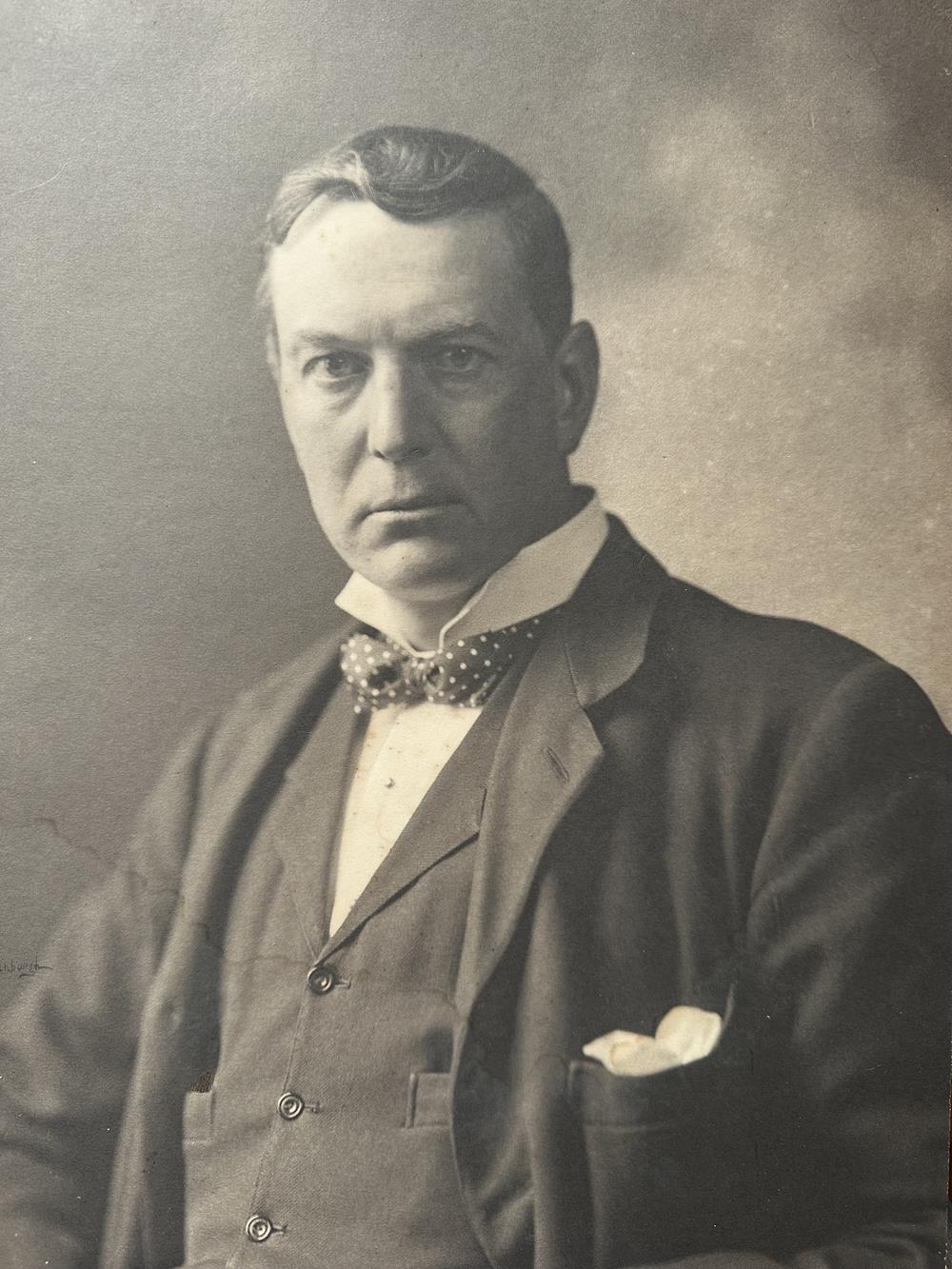
When the current occupants examined the photograph, they found this tab on the reverse:

“Portrait of Charles Martin Hardie, R.S.A. Garth Hill was built from his own design in 1899.”
While CMH lived at Garthhill, he painted several local scenes:
Rosyth Castle
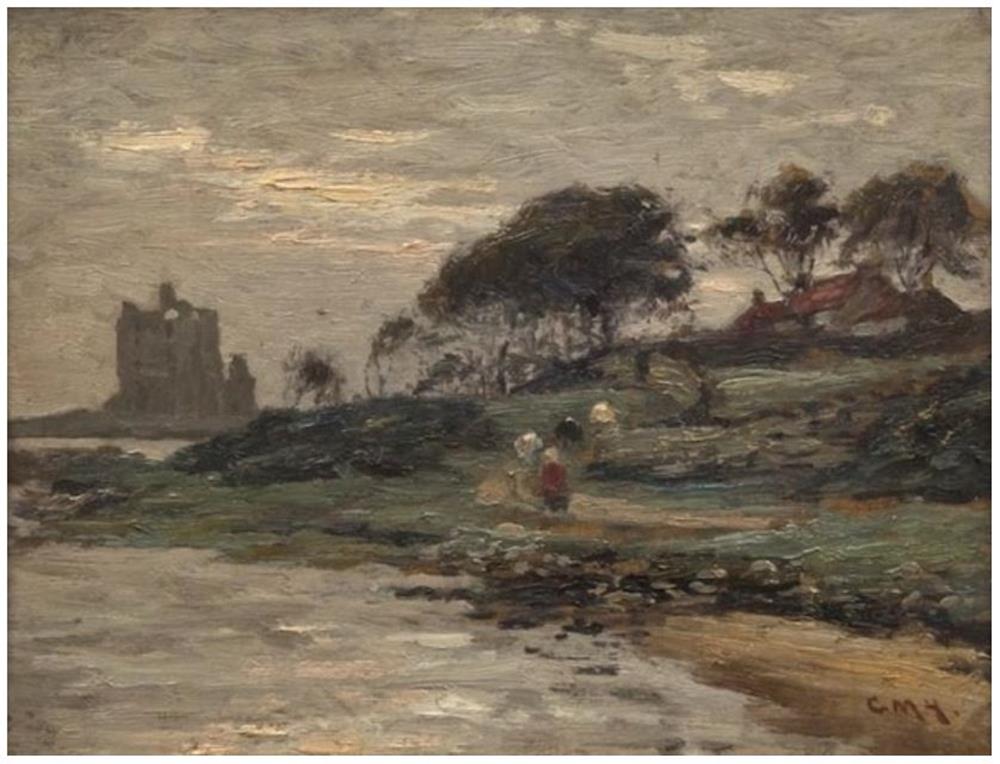
Summer on the Firth of Forth
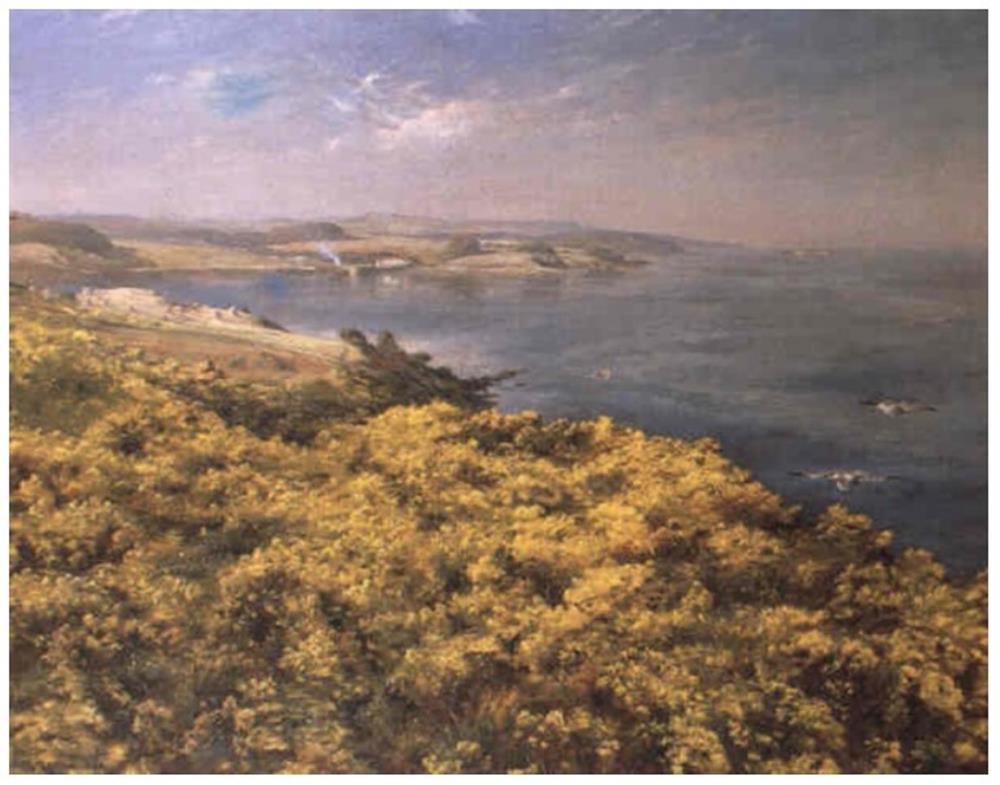
Playing on the rocks, Fife
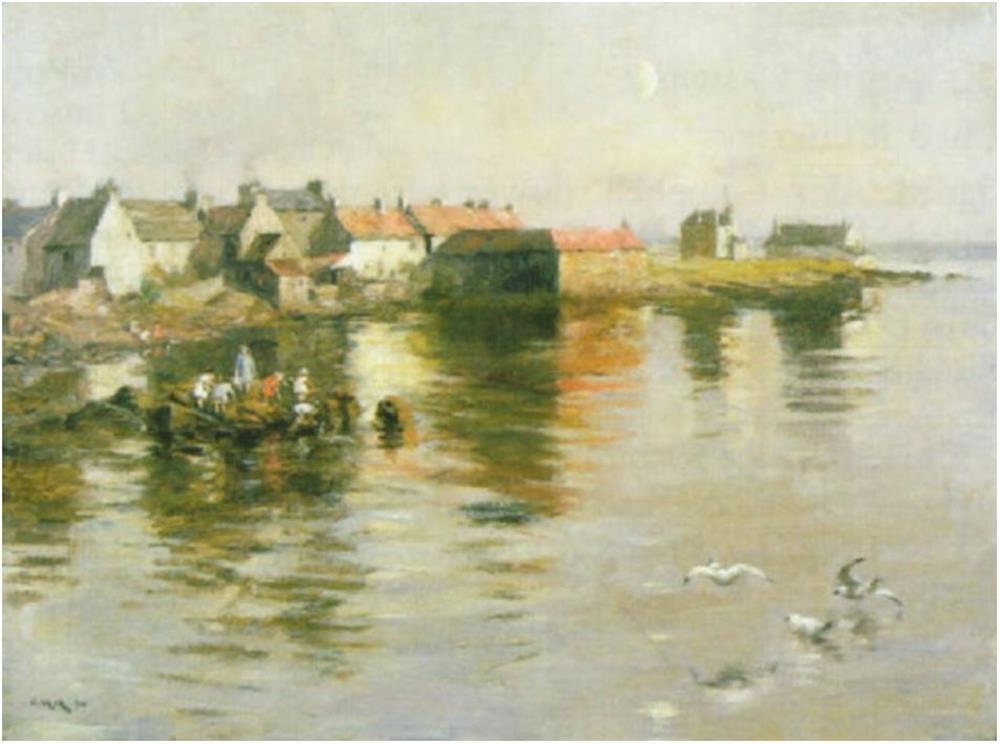
In 1912, Hardie leased to the Admiralty a stretch of land on the shore at Port Laing which became the site of the first Naval Air Station in Scotland. In 1914, he tried to negotiate an increase in the rent. This was one of the factors in moving the station to Dundee in 1914. More details here.
Charles Hardie died at home somewhat suddenly, from heart failure on 3rd September 1916.
He was remembered as a man of fine presence, of sociable disposition and a spirit of comradeship. These attributes made him popular amongst a wide circle of friends, and in the various Art and other Societies with which he was associated.
Martin Hardie – 1875 to 1952
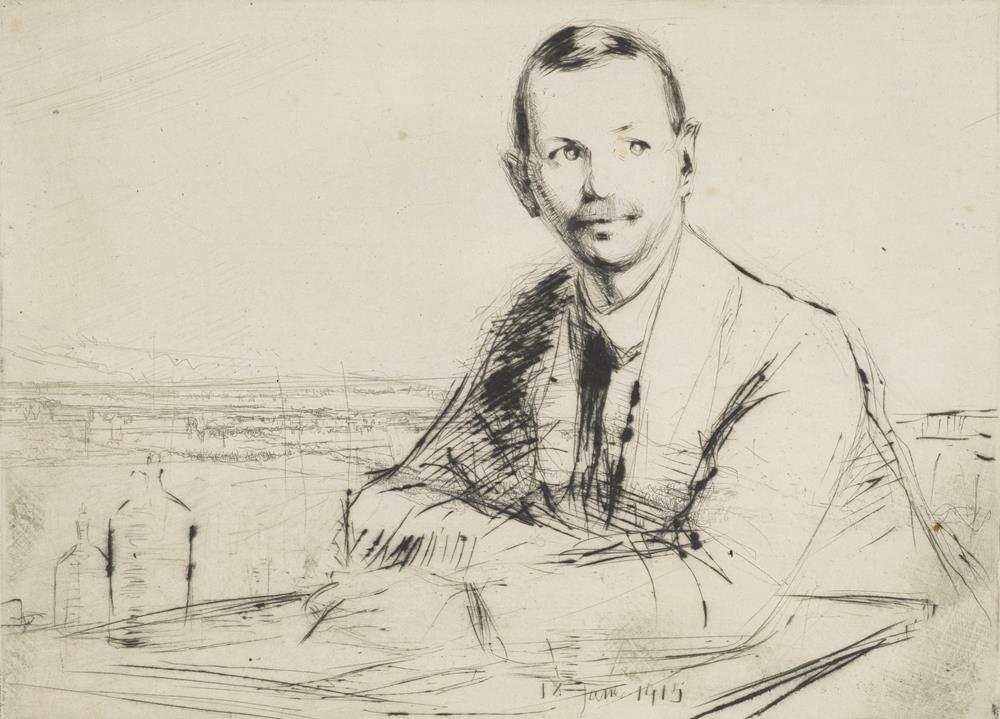
Another artist, Charles’s nephew Martin Hardie RE, RI, RSW, CBE, was a frequent visitor to Garthhill.
He was born 1875 in London, the son of a headmaster, educated at St Paul’s School, London and Trinity College, Cambridge.
A talented artist who won many prizes, he was, from 1921 to 1935, Keeper of the Department of Painting, Engraving, Illustration and Design at the Victoria and Albert Museum.
During that time he built up the graphics department into the finest in the country and produced over 200 drawings and 25 books of sketches.
His drawings, paintings and engravings are collected by some of the world’s leading galleries.
He died in Tonbridge, Kent in 1952.
On his visits to Garthhill, he created several engravings of local scenes:
The Old Harbour Light at North Queensferry, 1909 (from the collection held in the Fine Arts Museum of San Francisco.)
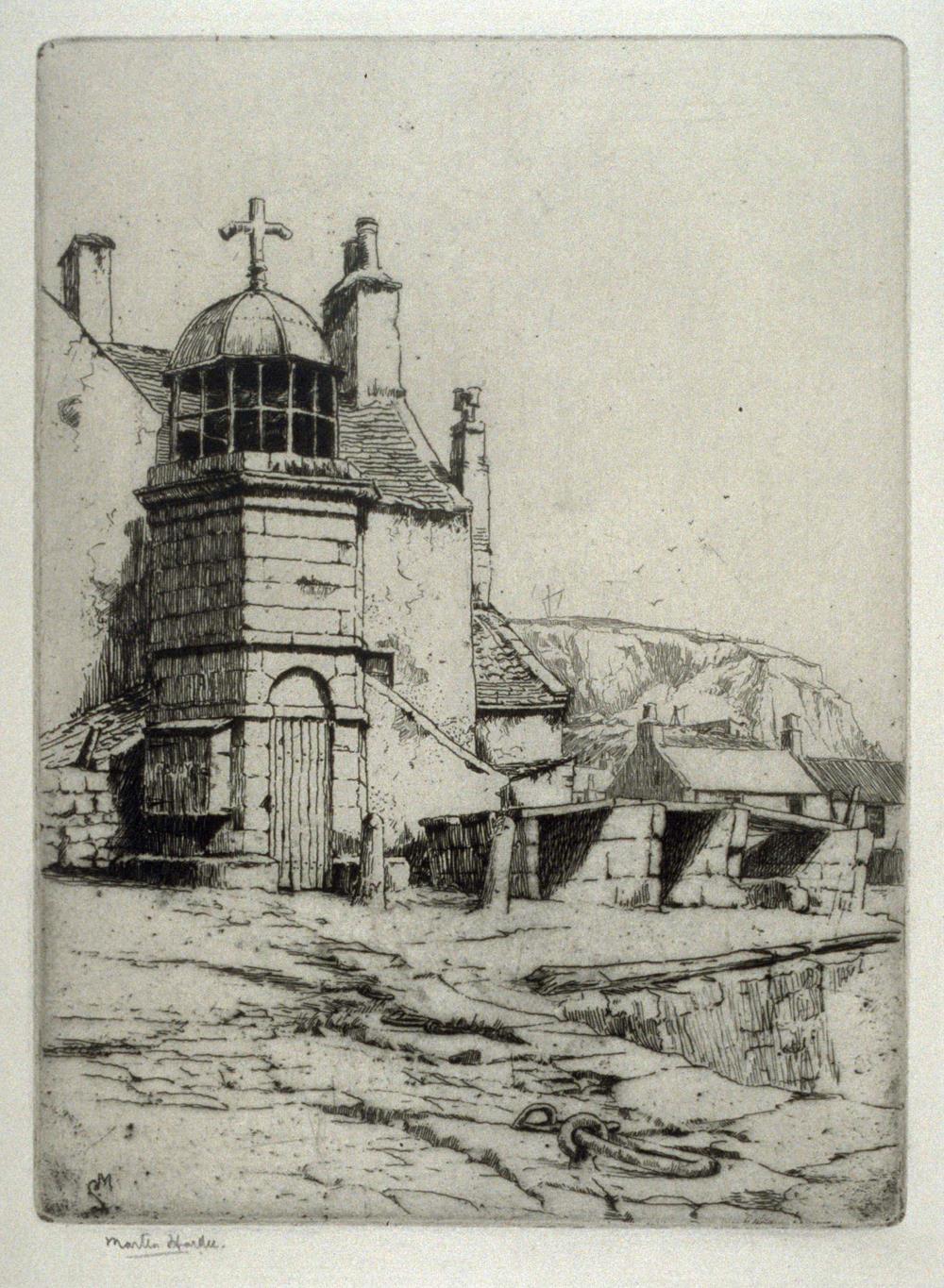
The High Street – Inverkeithing, 1905
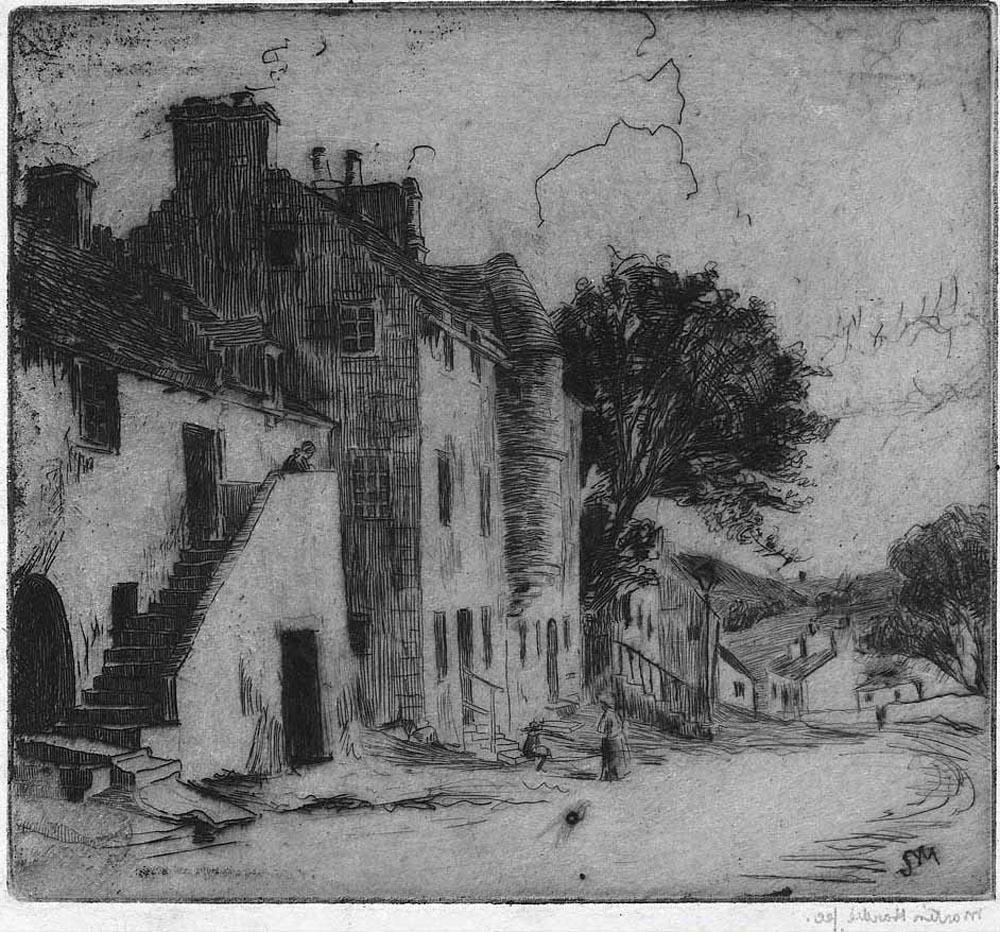
Inverkeithing from Cruickness, 1905
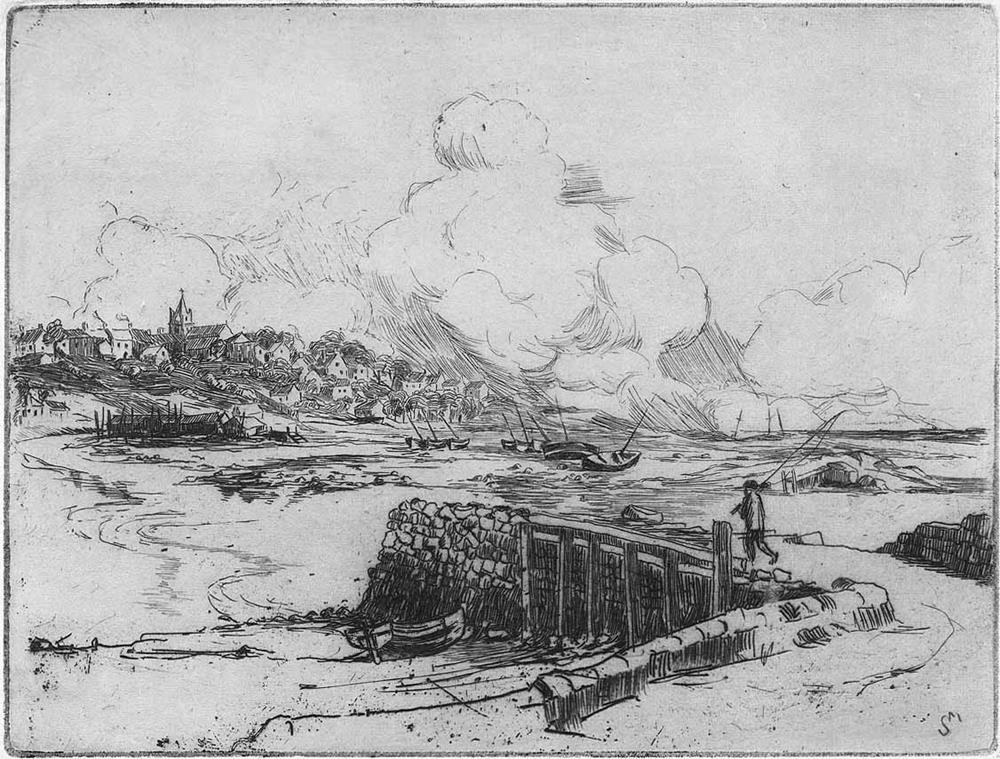
The Lazaretto at Cruickness, 1905
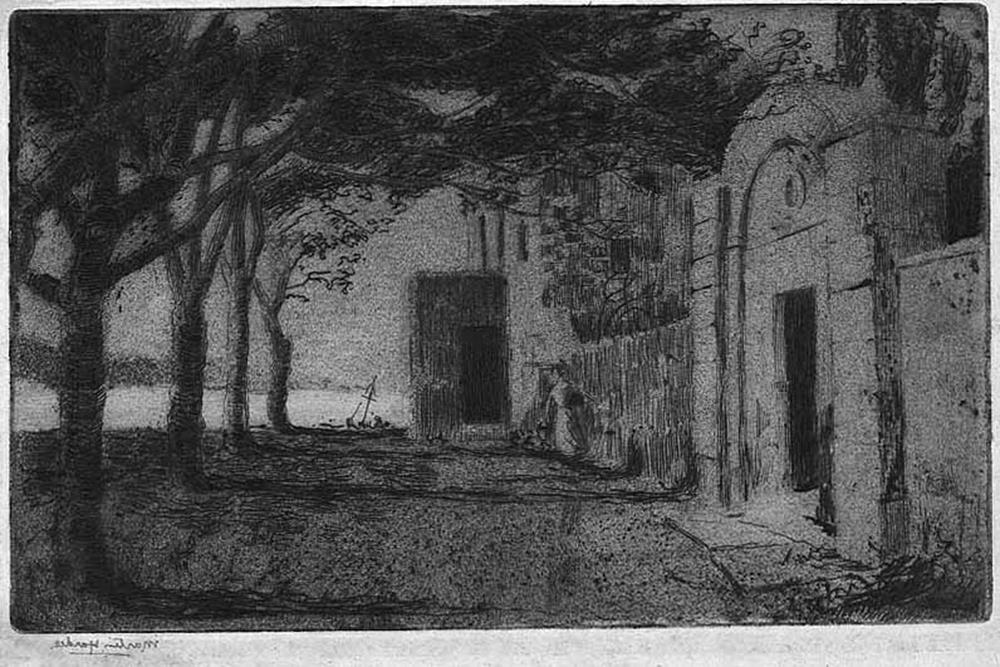
(These three are from the collection held in the Rijksmuseum, Amsterdam.
Sir John Lavery – 1856 to 1941

John Lavery was born in inner North Belfast, baptised at St Patrick’s Church, Belfast and, while still a child, moved to Scotland where he attended Haldane Academy in Glasgow in the 1870s and the Académie Julian in Paris in the early 1880s. He returned to Glasgow and was associated with the Glasgow School. In 1888 he was commissioned to paint the state visit of Queen Victoria to the Glasgow International Exhibition. This launched his career as a society painter and he moved to London soon after. In London he became friendly with James McNeill Whistler and was clearly influenced by him.
Lavery was appointed an official artist in the First World War. Ill-health, however, prevented him from travelling to the Western Front. A serious car crash during a Zeppelin bombing raid also kept him from fulfilling this role as war artist. He remained in Britain and mostly painted boats, aeroplanes and airships.
After the war he was knighted and in 1921 he was elected to the Royal Academy.
Sir John Lavery died in Rossenarra House, Kilmoganny, Co. Kilkenny on 10 January 1941, aged 84, from natural causes, and was interred in Putney Vale Cemetery.
Lavery painted several scenes around North Queensferry
The Forth Bridge, 1914
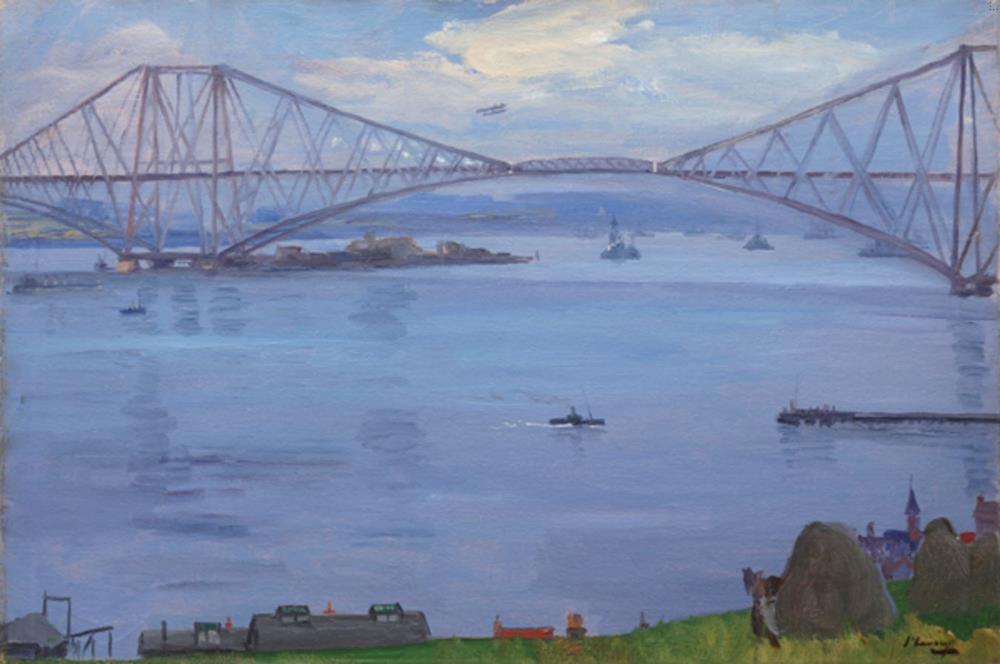
This view was probably painted in September 1914, in the knowledge that war had recently been declared and that this tranquil scene would soon be transformed. The biplane seen over the bridge would have come from the recently established aerodrome at Port Laing, North Queensferry. This was the first military air station in Scotland.
Air Station, North Queensferry, 1917.

Kite balloons were inflated on site, then transferred to the warships. Carrying two observers in a basket they were used by battleships and cruisers, to improve the range at which the enemy could be sighted.
This painting was a Silver Wedding present to King George V and Queen Mary from members of the royal family.
The King and Queen paid numerous visits to the Grand Fleet in the Firth of Forth and at Scapa Flow.
Lavery also captured scenes related to the surrender of the German High Seas Fleet in the Firth of Forth, November 1918. These are included HERE on our website
Terence Tenison Cuneo CVO OBE RGI FGRA – 1907 to 1996
Cuneo was a prolific English painter noted for his scenes of railways, horses and military actions. He was the official artist for the Coronation of Queen Elizabeth II. His father Cyrus was a renowned artist. He married Nell Tenison, a relative of the poet Tennyson in 1903.
Cuneo visited North Queensferry in 1964 to paint one of his most iconic images, the Flying Scotsman crossing the Forth Bridge.
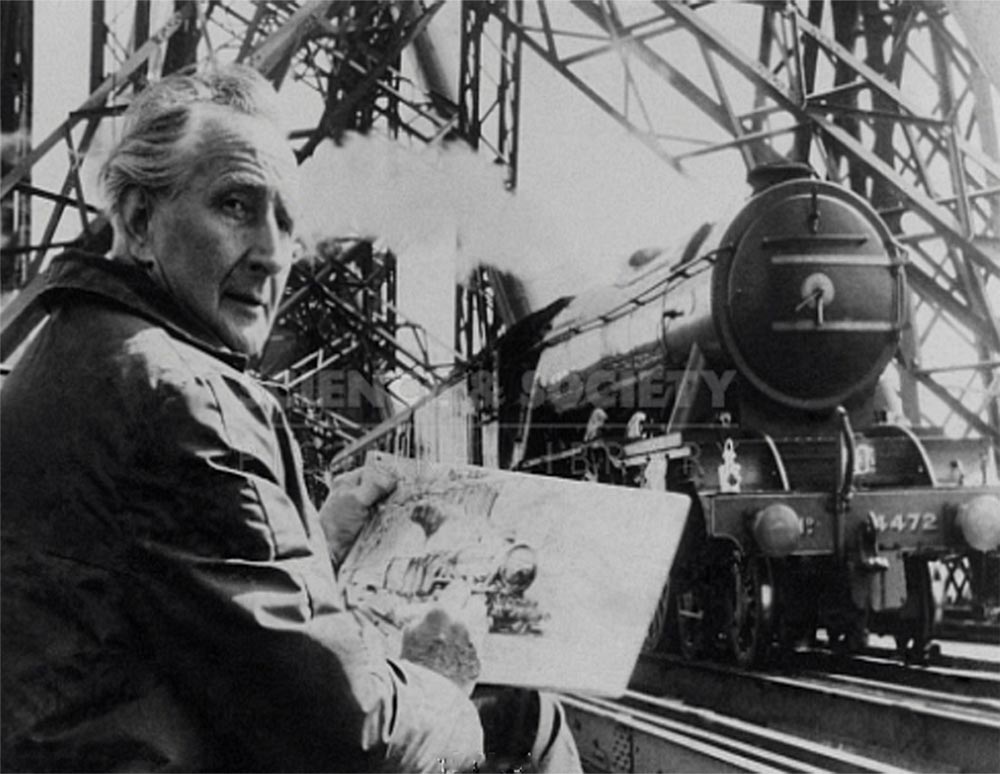
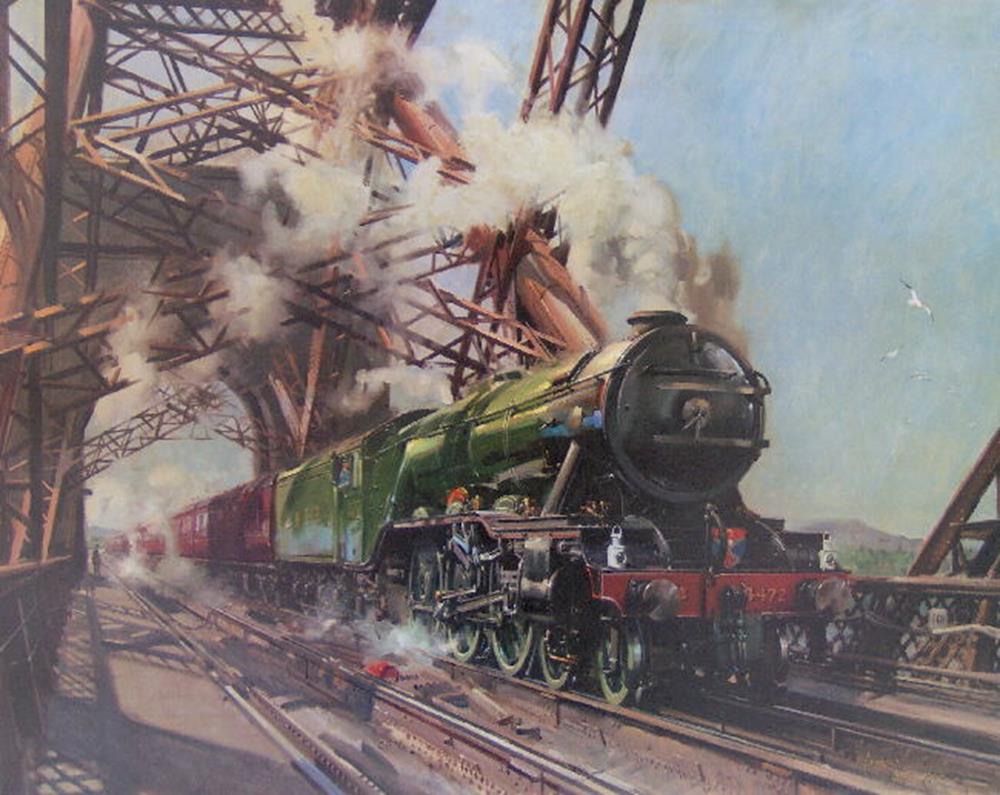
(Can you spot his trademark mouse in this painting?)

In 2002 the Terence Cuneo Memorial Trust, commissioned Philip Jackson to create this bronze memorial statue of Cuneo.
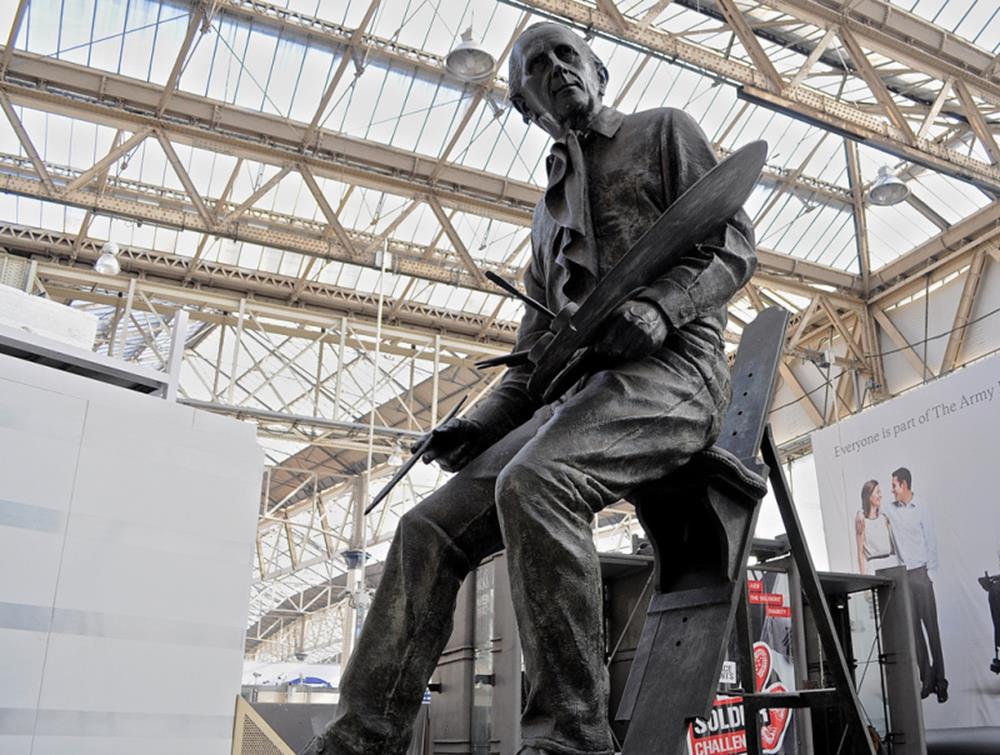
It stood in the main concourse at Waterloo station for many years, but has now been relocated to Brompton Barracks, Chatham.